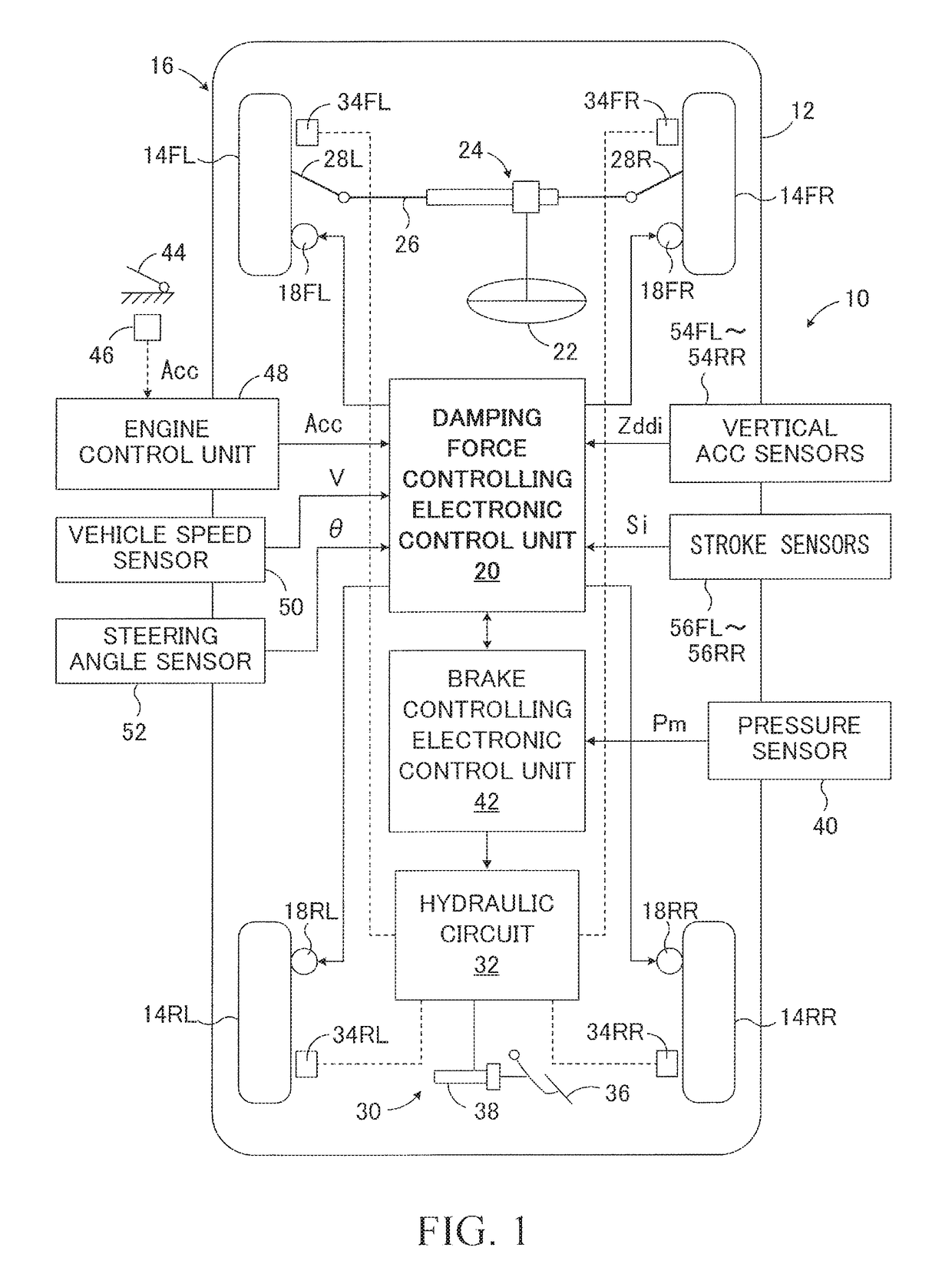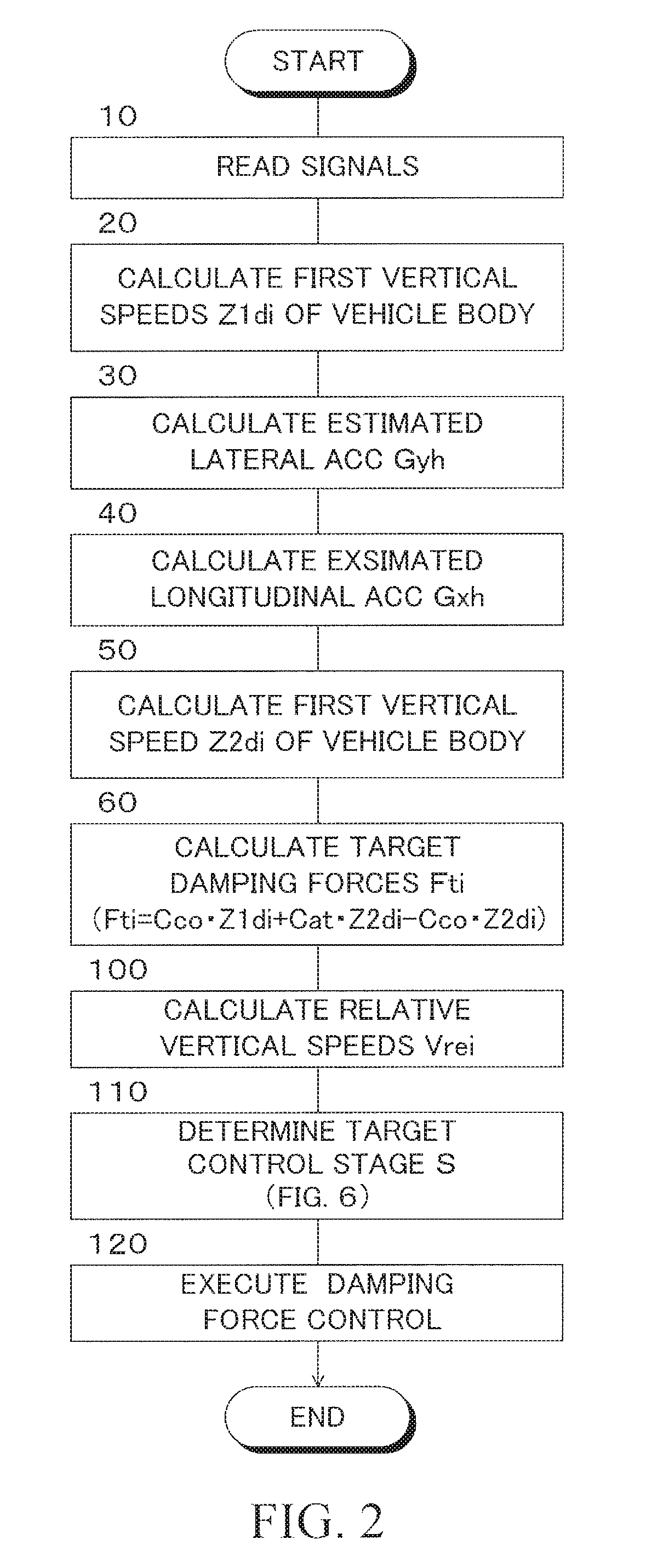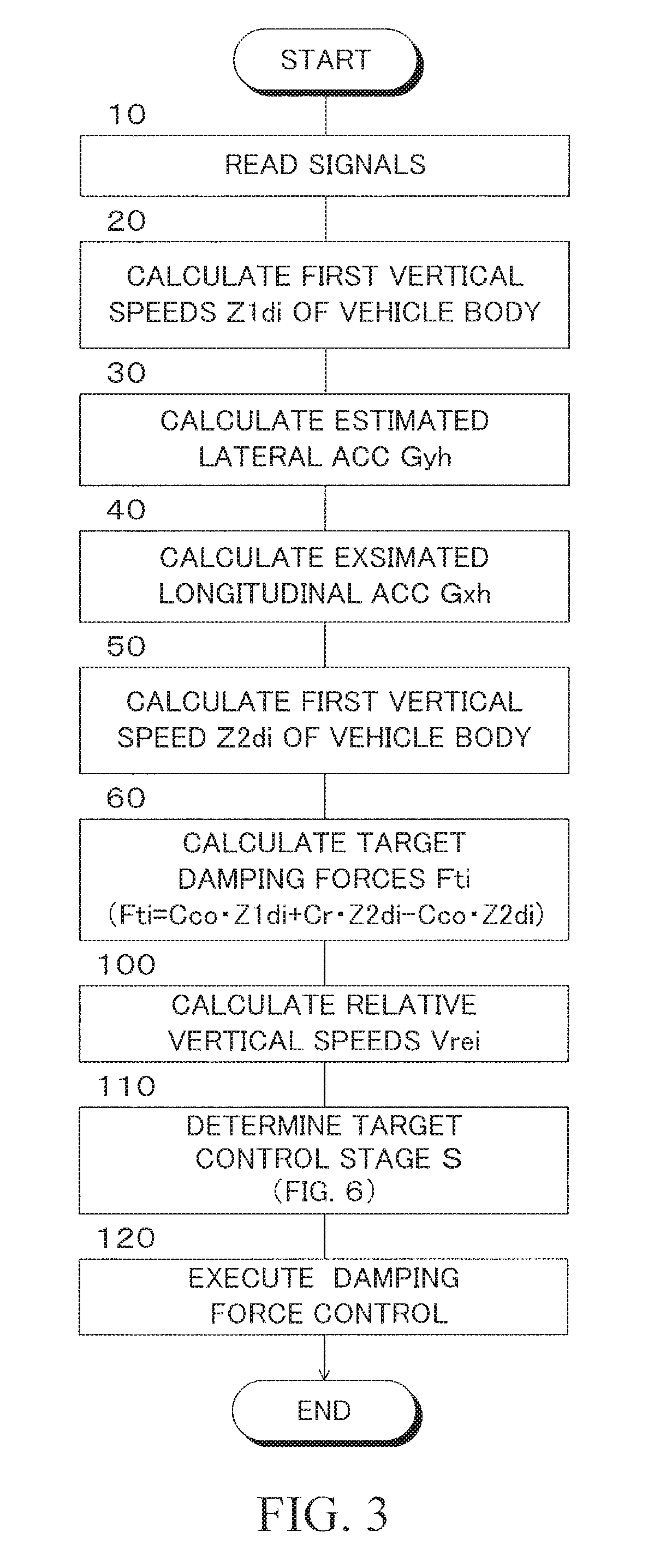Damping force control device for vehicle
a control device and vehicle technology, applied in the direction of vehicle components, electrical steering, resilient suspensions, etc., can solve the problems of inability to suppress inability to prevent adverse effects, and inability to calculate based on detected vertical accelerations. to achieve the effect of suppressing changes in vehicle body posture, and reducing the risk of accidents
- Summary
- Abstract
- Description
- Claims
- Application Information
AI Technical Summary
Benefits of technology
Problems solved by technology
Method used
Image
Examples
first embodiment
[0059]The damping force control apparatus 10 according to the first embodiment shown in FIG. 1 is applied to a vehicle 16 having a vehicle body 12 as a sprung mass and wheels 14FL, 14FR, 14RL and 14RR as unsprung masses. Shock absorbers 18FL, 18FR, 18RL and 18RR are mounted between the vehicle body 12 and the wheels 14FL, 14FR, 14RL and 14RR, respectively. The damping force control device 10 includes a damping force controlling electronic control unit 20 that controls damping coefficients CFL, CFR, CRL and CRR of the shock absorbers 18FL, 18FR, 18RL and 18RR.
[0060]The shock absorbers 18FL, 18FR, 18RL and 18RR are damping force variable shock absorbers having a plurality of control stages S. The control stages S take n (positive integer) steps ranging from the control stage S1 (soft) having the smallest damping coefficient Ci (i=FL, FR, RL and RR) to the control stage Sn (hard) having the largest damping coefficient Ci. The shock absorbers 18FL to 18RR generate damping forces represe...
second embodiment
[0083]The second embodiment is configured as a modification example of the first embodiment, and the damping force control in the second embodiment is performed according to the flowchart shown in FIG. 3. In FIG. 3, the same step numbers as those shown in FIG. 2 are assigned to the same steps as those shown in FIG. 2. This also applies to other embodiments to be described later.
[0084]Steps 10 to 30 and steps 100 to 120 are executed in the same manners as in the first embodiment. Step 40 in the first embodiment is not executed. When step 30 is completed, in a step 50, estimated vertical accelerations Z2ddi of the vehicle body 12 at the positions of the wheels 14FL to 14RR 12 are calculated in a manner known in the art based on the estimated longitudinal acceleration Gxh of the vehicle. Further, the second vertical speeds Z2di of the vehicle body at the positions of the wheels 14FL to 14RR caused by the driver's steering operation are calculated by integrating the estimated vertical a...
third embodiment
[0088]The third embodiment is also configured as a modification example of the first embodiment, and the damping force control in the third embodiment is performed according to the flowchart shown in FIG. 4.
[0089]Steps 10, 20, 40 and 100 to 120 are executed in the same manners as in the first embodiment. Step 30 in the first embodiment is not executed. When step 40 is completed, in a step 50, estimated vertical accelerations Z2ddi of the vehicle body 12 at the positions of the wheels 14FL to 14RR are calculated in the manner known in the art based on the estimated longitudinal acceleration Gxh of the vehicle. Furthermore, second vertical speeds Z2di of the vehicle body 12 at the positions of the wheels 14FL to 14RR caused by driver's acceleration / deceleration operation are calculated by integrating the estimated vertical accelerations Z2ddi.
[0090]When step 50 is completed, step 70 is executed instead of step 60 in the first embodiment. In step 70, the target damping forces Fti (i=F...
PUM
 Login to View More
Login to View More Abstract
Description
Claims
Application Information
 Login to View More
Login to View More - R&D
- Intellectual Property
- Life Sciences
- Materials
- Tech Scout
- Unparalleled Data Quality
- Higher Quality Content
- 60% Fewer Hallucinations
Browse by: Latest US Patents, China's latest patents, Technical Efficacy Thesaurus, Application Domain, Technology Topic, Popular Technical Reports.
© 2025 PatSnap. All rights reserved.Legal|Privacy policy|Modern Slavery Act Transparency Statement|Sitemap|About US| Contact US: help@patsnap.com



